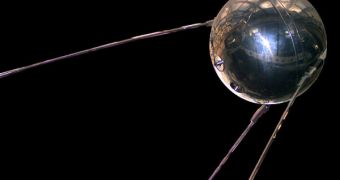One of the most long-lasting satellites that the Soviet Union placed into orbit some 21 years ago has now started acting up, spilling a trace of unidentified substances along its orbit, American observatories report. The January issue of the journal Orbital Debris Quarterly News details the nature of the spill, which was first observed in July 2008 by the US Space Surveillance Network. The nuclear core of the satellite has been inactive for more than two decades, so the Russian space agency Roscosmos says that the danger the spill poses is low.
According to the US Network, the debris are similar to small bubbles, which have metallic properties. This means that they are most likely made up of sodium potassium (NaK), which is a substance regularly used as a reactor coolant. One theory as to how it came to be released now states that discrepancies in temperatures recorded during the day/night cycle might have been the root cause of the malfunction.
“Alternatively, the hyper-velocity impact of a small particle might have generated sufficient heat to melt some of the NaK, which then would have formed spheres with metallic properties,” the recent report says. “To date, no similar debris generation by Cosmos 1867 has been observed,” it adds.
The Cosmos 1818 satellite's core functioned for roughly 5 months after it was placed into high orbit. One of the main reasons why higher altitudes were selected was the failure of previous missions, when, for example, the Radar Ocean Reconnaissance Satellites (RORSAT) Cosmos 954 dove nose-front into the atmosphere in 1978, and spilled radioactive remains over much of Canada.
Research is currently underway, as astronomers attempt to figure out if the droplets are still radioactive, and if they pose a risk of contamination for the Earth below. The US Network advises that the small particles are a peril to incoming ships and other satellites, because they have a density different from that of their surroundings, and, because they behave like metals, may be attracted to other magnetically-charged objects.

 14 DAY TRIAL //
14 DAY TRIAL //